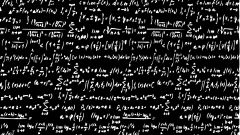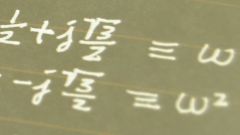Instruction
1
For a quick computation of the derivatives is first learn the table of derivatives of basic elementary functions. This table is derived is shown in Fig. Then, determine what type of your function. If this is a simple function of one variable, find it in the table and calculate. For example, (√(x))'=1/(2×√(x)).
2
In addition, it is necessary to study the main rules of finding derivatives. Let f(x) and g(x) is some differentiable function, is a constant. A constant value is always imposed for the sign of the derivative, that is, (s×f(x))'=c×(f(x))'. For example, (2×sin(x))'=2×(sin(x))'=2×cos(x).
3
If you need to find the derivative of the sum or difference of two functions, calculate the derivative of each term and then add them, that is, (f(x)±g(x))'=(f(x))'±(g(x))'. For example, (x2+x3)'=(x2)'+(x3)'=2×x+3×x2. Or, for example, (2^x−sin(x))'=(2^x)'−(sin(x))'=2^x×ln2−cos(x).
4
Calculate the derivative of product of two functions by the formula (f(x)×g(x))'=f(x)'×g(x)+f(x)×g(x)', that is, as the sum of the derivative of the first function to a second function and the derivative of the second function to the first function. For example, (√(x)×tg(x))'=(√(x))'×tg(x)+√(x)×(tg(x))'=tg(x)/(2×√(x))+√(x)/cos2(x).
5
If your function is a quotient of two functions, i.e. has the form f(x)/g(x), to compute its derivative, use the formula (f(x)/g(x))'=(f(x)'×g(x)−f(x)×g(x)')/(g(x)2). For example, (sin(x)/x)'=((sin(x)')×x−sin(x)×x2)/x2=(cos(x)×x−sin(x))/x2.
6
If you need to calculate the derivative of complex functions, i.e., functions having the form f(g(x)), the argument of which is any dependency, use the following rule: (f(g(x)))'=(f(g(x))'×(g(x))'. First, take the derivative for complex argument, believing it to be simple, then calculate the derivative of a complex argument and results multiply. This way you will find the derivative of any degree of nesting. For example, (sin(x)3)'=3×(sin(x))2×(sin(x))'=3×(sin(x))2×cos(x).
7
If your task is to calculate the derivative of the highest order, consistently calculate the derivatives of lower order. For example, (x3)"=((x3)')'=(3×x2)'=6×x.
Note
A sign ' denotes taking the derivative, and the sign ^ – exponentiation.










